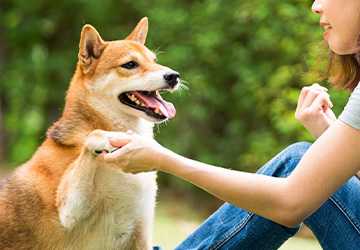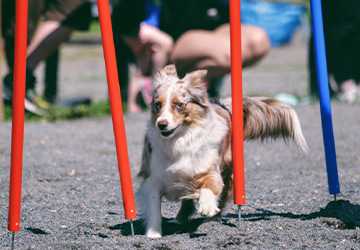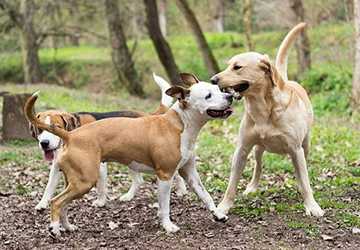10 Proven Methods to Train Your Dog Like a Pro
Training your dog can be a rewarding experience, but it's easy to get lost in the plethora of information available. Whether you're a first-time dog owner or just looking to teach your old dog some new tricks, you'll find these ten proven methods helpful in making your dog a well-behaved family member.

Revealing the Fundamentals: Decoding the Actions of Your Canine Companion
Knowing how your dog acts and thinks is your gateway to successful coaching. Before you dive into Simple Techniques for Dog Training for Novices, spend time observing your pet to gain insights into their preferences, regular activities, and moods. The non-verbal cues your dog displays can provide critical insights into their thoughts. Once you've grasped the foundational elements of how dogs convey their feelings, you can introduce them to targeted instructions or habits.
Establishing Core Principles: Uniformity and Instant Feedback
When exploring Expert Guidelines for Dog Discipline Training, immediate rewards and consistent instructions are crucial. Always offer a treat or other reward right after your dog executes the behaviour you want. This helps them link the act with a positive experience. In addition, stick with the same verbal cues for identical instructions.
The Importance of Reward-Based Training
Reward-based encouragement is the pillar of productive dog education. Offering incentives for desirable actions is generally more effective than penalties for undesirable conduct. When your dog follows a directive or shows favourable behaviour, acknowledge them with small treats or affection. Mastering Home-Based Dog Training becomes more straightforward when you apply these reward-based teaching methods.
Simple Commands: The Building Blocks of Obedience
Begin with straightforward commands like 'Sit,' 'Stay,' and 'Come.' Keep your training sessions short but frequent. This ensures that your dog doesn't get too tired or distracted, which is particularly crucial for Effective Dog Training Techniques for Beginners.

Tackling Unwanted Behavior: Correcting Instead of Punishing
If your dog exhibits unwanted behaviour, a correction is more effective than punishment. A simple "No" is usually sufficient to interrupt the behaviour. Pro Tips for Dog Obedience Training often suggests using a stern tone to correct your dog rather than resorting to physical methods.
Socialization: A Key Aspect of Training
Socializing your dog is another crucial aspect of training. Expose your dog to different people, animals, and environments. This helps make your pet well-behaved in various situations, addressing the broad spectrum of How to Train Your Dog at Home.
Off-Leash Training: Building Trust and Independence
As you progress, you should trust your dog to obey commands even when they are off-leash. This not only gives your dog some freedom but also tests the effectiveness of your Pro Tips for Dog Obedience Training.
Agility Training: Beyond Basic Commands
Agility training is not just for dogs that compete. Simple agility exercises stimulate your dog's mind and provide physical exercise, a hidden gem among Effective Dog Training Techniques for Beginners.
Handling Medical Concerns: Health Checks and More
Sometimes, behavioural issues can be linked to underlying medical problems. If you notice sudden changes in your dog's behaviour, consult a vet. This ties back to knowing How to Train Your Dog at Home; understanding your dog's physical state is part and parcel of practical training.
Advanced Training: Preparing for Competitions
If you've been successful with basic and intermediate training, consider preparing your dog for obedience or agility competitions. This is where Pro Tips for Dog Obedience Training comes into play, helping you fine-tune specific skills needed for the competitive arena.
The Importance of Mental Stimulation: Keeping Your Dog's Brain Active
One aspect often overlooked in dog training is mental stimulation. Engaging your dog's brain is just as important as physical exercise. You can use puzzle toys or play games that make your pet think. It's a different angle when considering Effective Dog Training Techniques for Beginners. This kind of mental engagement prevents boredom and minimizes destructive behaviour.
Incorporating Technology: Using Apps and Gadgets
Today's technology offers exciting ways to enhance dog training. Some apps can help you log your training sessions, track progress, and even provide Pro Tips for Dog Obedience Training. Gadgets like treat-dispensing cameras can also be beneficial, particularly for reinforcing good behaviour even when not at home. It's a modern take on How to Train Your Dog at Home.
Real-Life Situations: Practicing in Public Spaces
Once you feel confident in your dog's ability to follow commands at home, try practising in more distracting environments. Whether it's a busy park or a friend's house, training your dog to listen in different settings is a crucial step.
Diet and Training: The Role of Nutrition
Your dog's diet plays a significant role in how practical your training sessions will be. Feeding your pet high-quality food can increase energy levels, better concentration, and overall well-being. In this regard, nutrition is an indirect but essential aspect of Effective Dog Training Techniques for Beginners.
When to Seek Professional Help: The Signs
If, despite your best efforts, you're finding it challenging to train your dog, it may be time to consult a professional. Chronic behavioural issues or aggressive tendencies are often best addressed by experts. When you've exhausted your list of How to Train Your Dog at Home, don't hesitate to seek professional advice.
Conclusion
In conclusion, dog training is an evolving process that requires patience, consistency, and an understanding of your dog's needs and behaviours. Whether you are a novice or an experienced dog owner, these proven methods will help you train your dog like a pro. After all, Effective Dog Training Techniques for Beginners are not just for newbies; they form the foundation for all levels of training to build upon. So the next time you wonder How to Train Your Dog at Home, remember these tips and watch your furry friend become a well-behaved family member.







